St. Augustine is rich in history, and in the late 1800s, rich was the operative word. During the Gilded Age (1870s to about 1900), this little town became the premier resort destination for the well-to-do – and it all began in 1883 with an auspicious visit by Henry Morrison Flagler, John D. Rockefeller’s partner in founding Standard Oil.
During the Gilded Age, St Augustine became a tourist destination that it still thrives as to this day. To rediscover Gilded Age destinations and architecture, visit one of these attractions in St. Augustine.
Hotel Ponce de León, built in 1888 by Henry Flagler, is now known as Ponce de Leon Hall, the centerpiece for Flagler College. The hotel was Flagler’s first in a series of luxury resorts along Florida’s east coast. Its grandeur launched the careers of famed architects, John Merven Carrère and Thomas Hastings. The building was the first major poured-in-place concrete building in the United States and is a masterpiece of Spanish Renaissance architecture. Louis Comfort Tiffany designed the hotel’s interior, including remarkable stained glass and mosaics. The Edison Electric Company powered the building with steam heat and 4,000 electric lights, making the hotel one of the nation’s first electrified buildings.
The Lightner Museum occupies the former Alcazar Hotel, a Gilded Age resort hotel commissioned and built by Henry Flagler in 1888. Architects John Merven Carrère and Thomas Hastings constructed this architectural masterpiece that housed some of America’s wealthiest vacationers at the turn of the 20th century. The hotel housed the world’s largest indoor swimming pool at the time, a grand ballroom, sulfur baths, a steam room, massage parlor, a gymnasium, a bowling alley, archery ranges, tennis courts and a bicycle academy. The Lightner Museum is home to an extensive collection of Gilded Age artifacts, including fine and decorative art, Tiffany glass, musical instruments and rare oddities such as mummy and human hair art.
The Casa Monica Hotel, an opulent Gilded-Age resort hotel, was constructed in 1888 and later purchased by Henry Flagler who changed the name to Cordova. The hotel closed in 1932 but was restored to a luxurious hotel in the mid-90s. Today, it is the only former Gilded Age hotel that still serves as a hotel and maintains its heritage with its decorative lobby, fountains, frescos and chandeliers all dating back to the turn of the 20th century, transporting visitors to the heyday of the Gilded Age in America.
Memorial Presbyterian Church, built in 1889 by Henry Flagler, is a memorial to his daughter who passed away that same year. Memorial Presbyterian Church was designed by architects John Merven Carrère and Thomas Hastings. Many of the exterior architectural details were created with gold and white terracotta. The copper dome was created in Italy, the floors are Italian marble, the pews are carved from mahogany and the baptismal font was carved from a single block of Siena marble. When Flagler died in 1913, he was interred in a marble mausoleum connected to the church alongside his daughter Jennie, his granddaughter and his first wife Mary Harkness Flagler.
Grace United Methodist Church, a site on the U.S. National Register of Historic Places, was built by Henry Flagler in 1887. Designed by architects John Merven Carrère and Thomas Hastings, the building boasts a Spanish Renaissance Revival architectural style. The church is built of poured concrete and the sanctuary is adorned with Louis Comfort Tiffany stained glass windows, resembling Ponce de León.
Villa Zorayda Museum, constructed in 1883, represents the birth of the Moorish Spanish Revival style that is seen throughout the city today. The building was a private residence and a restaurant and club, before becoming the Villa Zorayda Museum, which features the priceless antique collection of the building’s previous owners.
About Dave's Travel Corner
 Dave's Travel Corner is a travel content, resource provider and community (founded 1996) providing travel Guides written about Dave's personal travel experiences and Journals, pages that contain trip summaries and experiences written by fellow travelers. We spotlight locations and attractions with an article linked directly from our homepage including content across our blog, photo and video galleries. We use a combination of social media, written content, photography and videos to promote locations. Not only does the content appear on this site but we have direct partnerships with other well visited travel sites for placement of the content. Since 1996, we have also established hundreds of relevant link exchanges with other travel sites.
Dave's Travel Corner is a travel content, resource provider and community (founded 1996) providing travel Guides written about Dave's personal travel experiences and Journals, pages that contain trip summaries and experiences written by fellow travelers. We spotlight locations and attractions with an article linked directly from our homepage including content across our blog, photo and video galleries. We use a combination of social media, written content, photography and videos to promote locations. Not only does the content appear on this site but we have direct partnerships with other well visited travel sites for placement of the content. Since 1996, we have also established hundreds of relevant link exchanges with other travel sites.
Visitors to Dave's Travel Corner will also find thousands of travel related links organized by categories on the Resources Page, a Photo Gallery containing International travel photos, Book Reviews, and Product Reviews focusing on products useful for travelers, fully automated Forums, Tour Bookings offering over 4400 unique tours around the globe, Interviews with those making news in the travel industry and Videos - specializing in International travel videos as well as home of the Dave & Jim Show.
Dave's own travel blog is Above the Clouds which focuses on International Travel & Lifestyle.
For information on advertising please choose from a variety of advertising options here.
Contributors are welcome

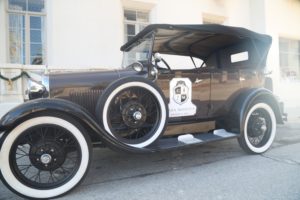
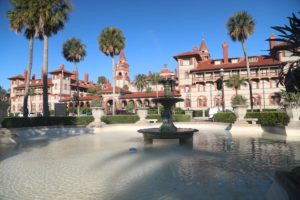
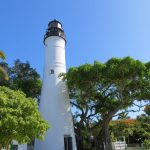
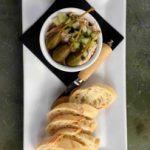
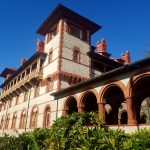

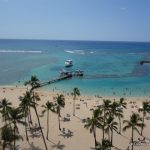

Leave a Reply